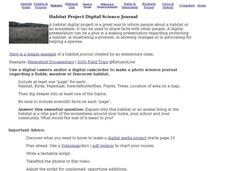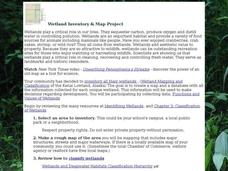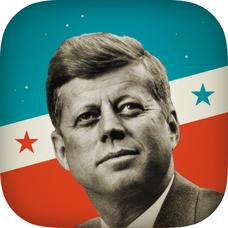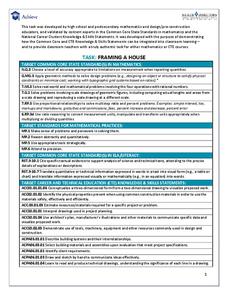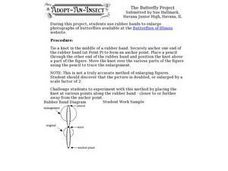Curated OER
Animal Adaptations
Young scientists explore the animal kingdom from the safety of the classroom with this short research project. After first choosing an animal, children use the Internet to discover where it lives, what it eats, and how it...
Kids Discover
Ancient Egypt by KIDS DISCOVER
Discover Ancient Egypt! Learn about mummification and gods, visit pyramids and temples, examine cliff carvings and paintings, take quizzes and engage in activities. Colorful, interactive, and easy to use, this app is not just for kids!
Curated OER
AP: Chapter 20: DNA Technology
This nine-page biotechnology resource contains six pages of questions regarding DNA technology. Questions cover cloning, restriction enzymes, the polymerase chain reaction, different techniques, the human genome project, and more. The...
Concord Consortium
Function Project
What if a coordinate plane becomes a slope-intercept plane? What does the graph of a linear function look like? Learners explore these questions by graphing the y-intercept of a linear equation as a function of its slope. The result is a...
Curated OER
Habitat Project Digital Science Journal
In this habitat project digital science journal activity, students use a digital camera or camcorder to create a science journal about a habitat they have studied. This page includes links to helpful web resources for planning and...
Curated OER
Derbyshire Accent Project 1
Compare the Derbyshire accent to Standard English. There are eight common differences between the two languages for learners to discover. A great worksheet to start a discussion on the various forms and conventions of Standard English.
Prestwick House
Discovering Genre: Poetry
Work on literal and figurative meanings with a lesson focused on Robert Frost's "After Apple-Picking" and "The Road Not Taken." Readers identify the literary devices used by the poet to set the poems' themes, settings, and narrative...
Curated OER
Activity Sheet 3: Focus Questions: The Earhart Project
In this Earhart Project activity, students read about the Earhart Project and answer questions about it. They write short answers to information pertaining to the project, its cost, findings reported, and expeditions led. This one page...
Curated OER
Energy Saving Digital Video Project
In this energy instructional activity, students click on the links to research the internet about energy and follow directions in order to create a digital video project. Students follow 8 sets of directions.
Curated OER
Wetland Inventory and Map Project
In this wetlands inventory and map project activity, students do research on the wetlands and complete a map project about it. Students follow 6 sets of directions with Internet links.
Project WET Foundation
Discover Our Ocean
A very informative interactive presents ocean zones, estuaries, hot water vents, phytoplankton, coral reefs, sea turtles, kelp forests, and all things that thrive in the ocean.
John F. Kennedy Library Foundation
JFK Challenge
And so, my fellow Americans: ask not what your country can do for you—ask what you can do for your country. And so begins your invigorating, innovative learning experience in the JFK Challenge app! Learners...
Mojang
Minecraft – Pocket Edition
You don't have to be a Minecraft wiz to know that this app has great playability for your learners! As afterschool programs and classroom projects around the world demonstrate, this game goes well beyond placing blocks and traditional...
Curated OER
Derbyshire Accent Project: Notes 2
In this Derbyshire accent worksheet, students consider why the accent is used as they read 5 talking points. Students also discover 10 phonetic differences between the Derbyshire accent and standard English.
Teach Engineering
Discovering Relationships Between Side Length and Area
Consider the relationship between side length and area as an input-output function. Scholars create input-output tables for the area of squares to determine an equation in the first installment of a three-part unit. Ditto for the area of...
University of Chicago
Don't Be Too Flaky
Snow, ice, and water are all composed of H2O. Does that mean they all have the same volume? Discover the ways that the densities of these substances determine their volumes, and how they change based on their current states of...
Beauty and Joy of Computing
Sprite Drawing and Interaction
Discover how to program objects to move on a screen. In the second lab of a five-part unit, each learner uses block instructions to program a sprite to follow their mouse (cursor). They investigate how to use these same block...
NOAA
Satellite Communications
How do satellites communicate? What types of satellites orbit Earth? Discover and mimic the way satellites communicate between two points in a hands-on activity that has pupils using mirrors, flashlights, and marbles.
Achieve
Framing a House
If members of your class wonder where they can use the math they learn in middle school, let them discover the answer. Learners apply geometry concepts of scale and measure to calculate the costs of framing a house addition.
Radford University
Parallel Lines, Transversals, and Angles: What’s the Connection?
Streets, bridges, and intersections, oh my! Parallel lines and transversals are a present in the world around us. Learners begin by discovering the relationship of the angles formed by parallel lines and a transversal. They then...
Thoughtful Learning
Understanding the Parts of the Brain
A mini-lesson explains the role the parts of the brain play in thinking and learning. Scholars discover why feeling safe, calm, and connected is essential to learning effectively.
Museum of Science
Gravity Sewer
It's all downhill from here. Scholars model a sewer system using straws and other household materials. They test out their systems using colored water and discover how gravity plays an essential role in sewers.
Curated OER
The Butterfly Project
In this project worksheet, students use rubber bands to enlarge pictures of butterflies found at the Butterflies of Illinois website.
Curated OER
Probability Games and Activities, Unit 6
Get your mathematicians thinking about probability with these three activity ideas using tangible math. First, students use dice to play a simple game, determining how many "odds" and "evens" they need to win. Next, they consider...




